Registered Users
This section lists down all the users registered in an enterprise.
Update User Information
Once a user accepts the invitation, an operator will be able to update the user's profile and certificate details. Refer User Invitations to see the flow.
- Click "Enterprises" from the left menu pane and then click "Registered" from the drop down.
- Then click
 adjacent to the enterprise and then click
adjacent to the enterprise and then click  against an enterprise user and then the "Edit" button. It allows an operator to update user information.
against an enterprise user and then the "Edit" button. It allows an operator to update user information.
Operators can also update the user profiles and certificate details if it is allowed in the Role.
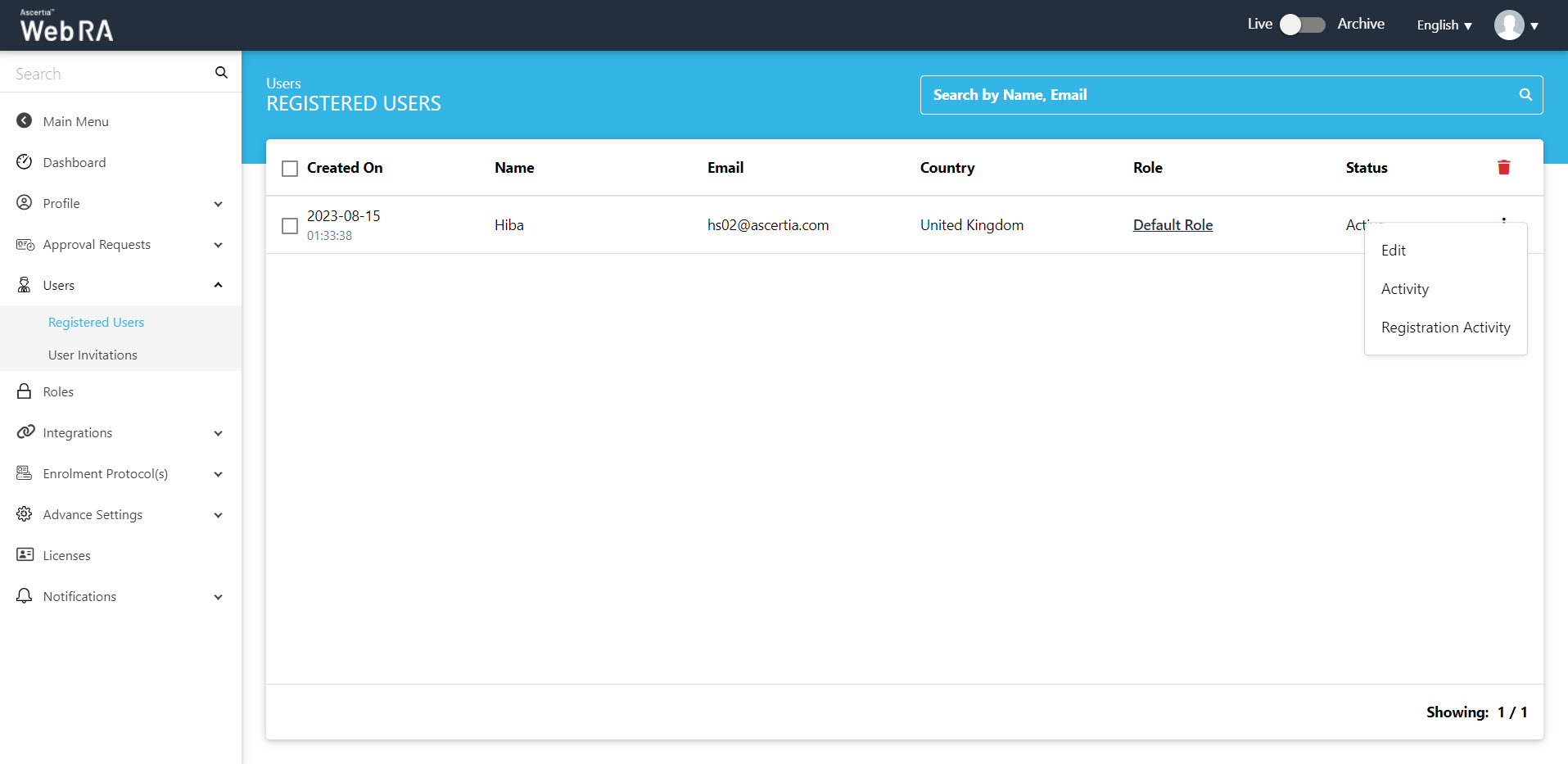
Once you click "Edit" the following screen appears. It consists of two tabs:
This section consists of the details of a user such as name, email, job title, country, status, mobile number and role. The red sterik indicate compulsory fields.
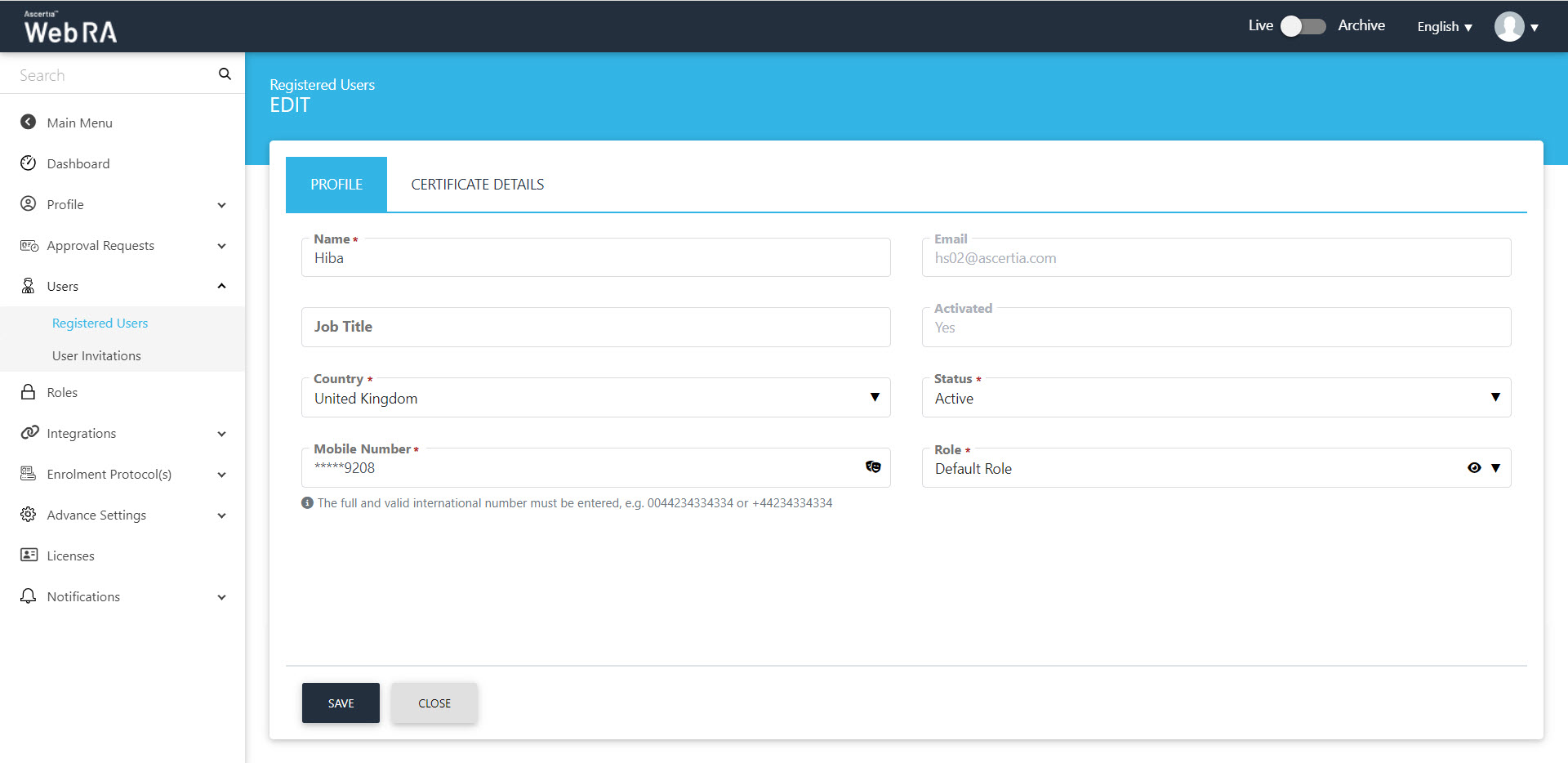
The Certificate Details screen consists of Subject Distinguished Name (SDN), Subject Alternative Name (SANs) and Other Name.
Certificate details as the name explains are the various attributes that will be included in a certificate request.
Subject Distinguished Name (SDN)
A Subject Distinguished Name is a unique identifier used in public key infrastructure (PKI) systems to specify the identity of an entity, typically in the context of SSL/TLS certificates. It is composed of several fields that provide information about the entity, such as its name, organizational unit, organization, location, and more.
The Subject DN is part of the X.509 standard, which defines the format of certificates used in a secure communication over the internet. It helps in uniquely identifying and authenticating entities in a digital certificate hierarchy.
For instance, in a typical SSL/TLS certificate, theSDN might contain information like:
- Common Name (CN): Usually the domain name of the entity (e.g., www.example.com).
- Organization (O): The legal entity or organization that owns the domain.
- Organizational Unit (OU): Subdivisions or departments within the organization.
- Country (C): The country where the entity is registered.
- State or Province (ST): The state or province within the country.
- Locality (L): The city or locality.
Each component of the SDN helps to uniquely identify the entity and is crucial for verification and validation processes when establishing secure connections or verifying the authenticity of a certificate.
An operator can configure the following SDNs for a specific user to appear in his certificate requests as listed below: (Screenshot attached)
- Common Name
- First Name
- Last Name
- Organisation Unit
- Organisation Identifier
- Locality
- Street Address
- State
- Postal Code
- Country
- Subject Serial Number
- Unique Identifier
- Business Category

Subject Alternative Name (SAN)
- Domain Name (DNS) - You can configure the domain and its sub domains from this drop down. ADSS Web RA supports the configuration of domain names on an enterprise level. The DNS name will be used in the certificate request form for its utilization while generating certificates exclusively from the domains pre-configured within their enterprise. These fields will only appear if they are configured in an Enterprise's role. Click here to learn more about Domain Name (DNS).
- IP Address
- Email Address

Other Name
- OID
- Value
- Encoding
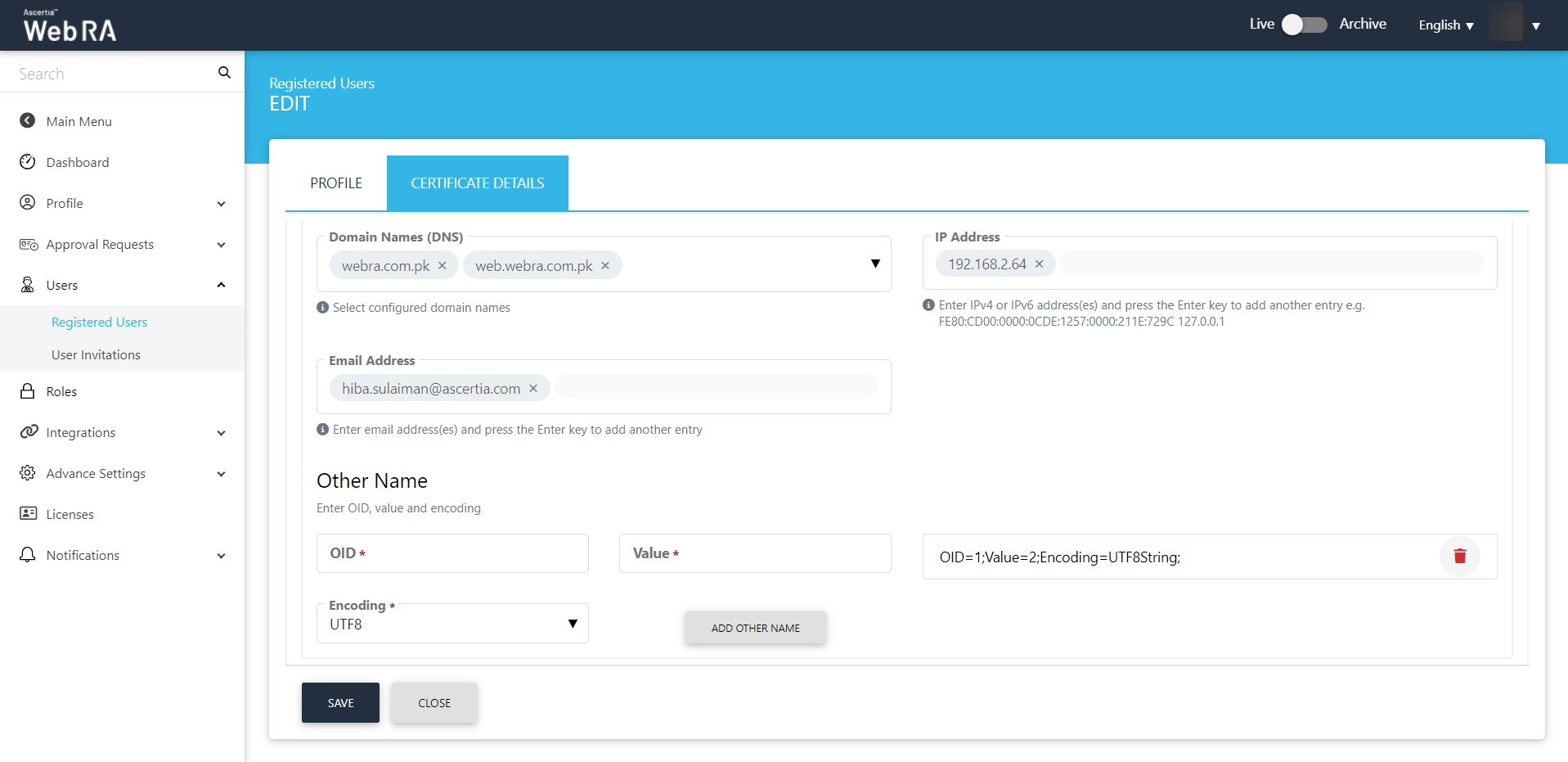
Click Save to update user certificate details.
User Activity
Click ![]() against a user and click Activity as shown below:
against a user and click Activity as shown below:
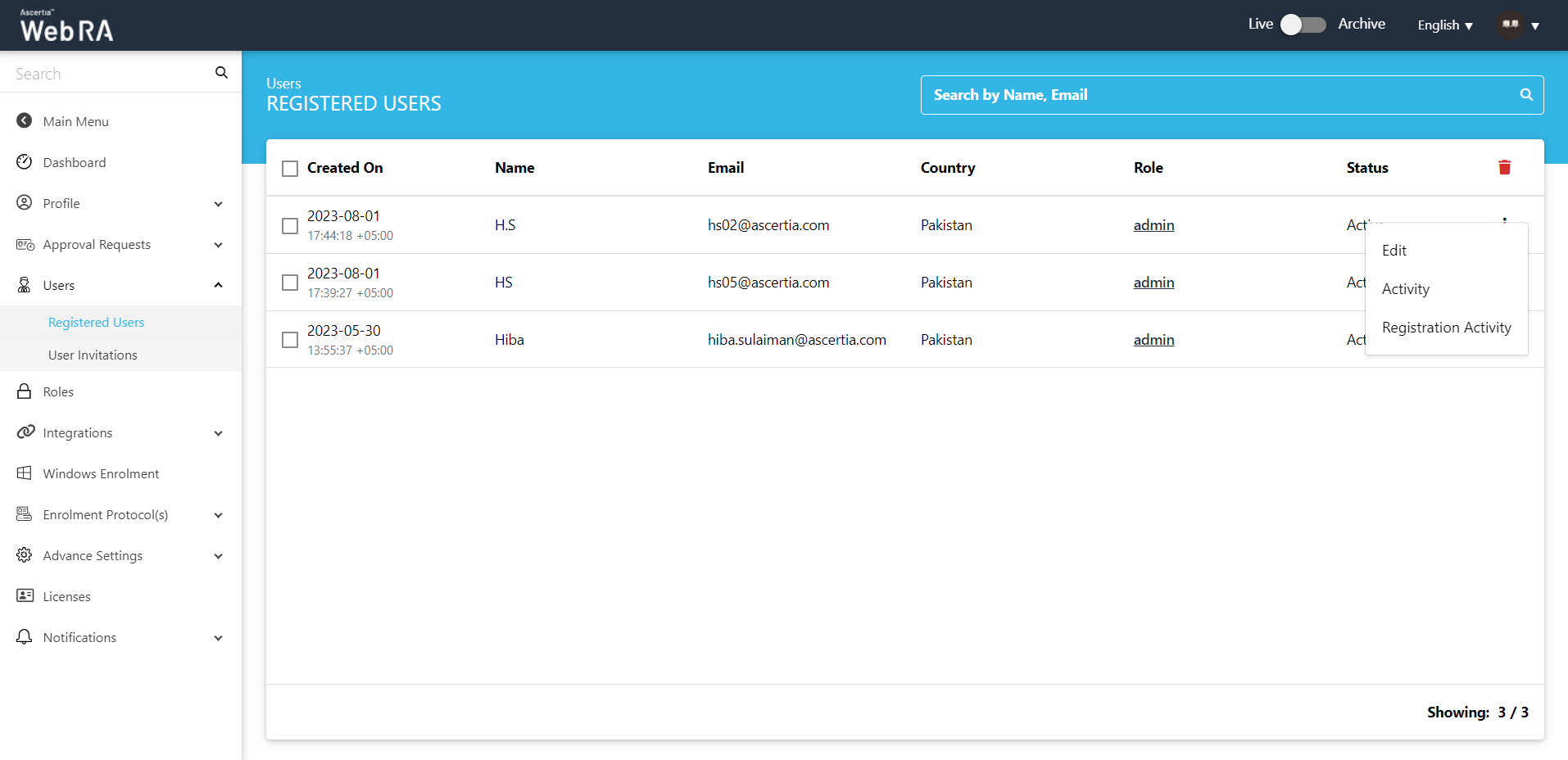
Then click Details.
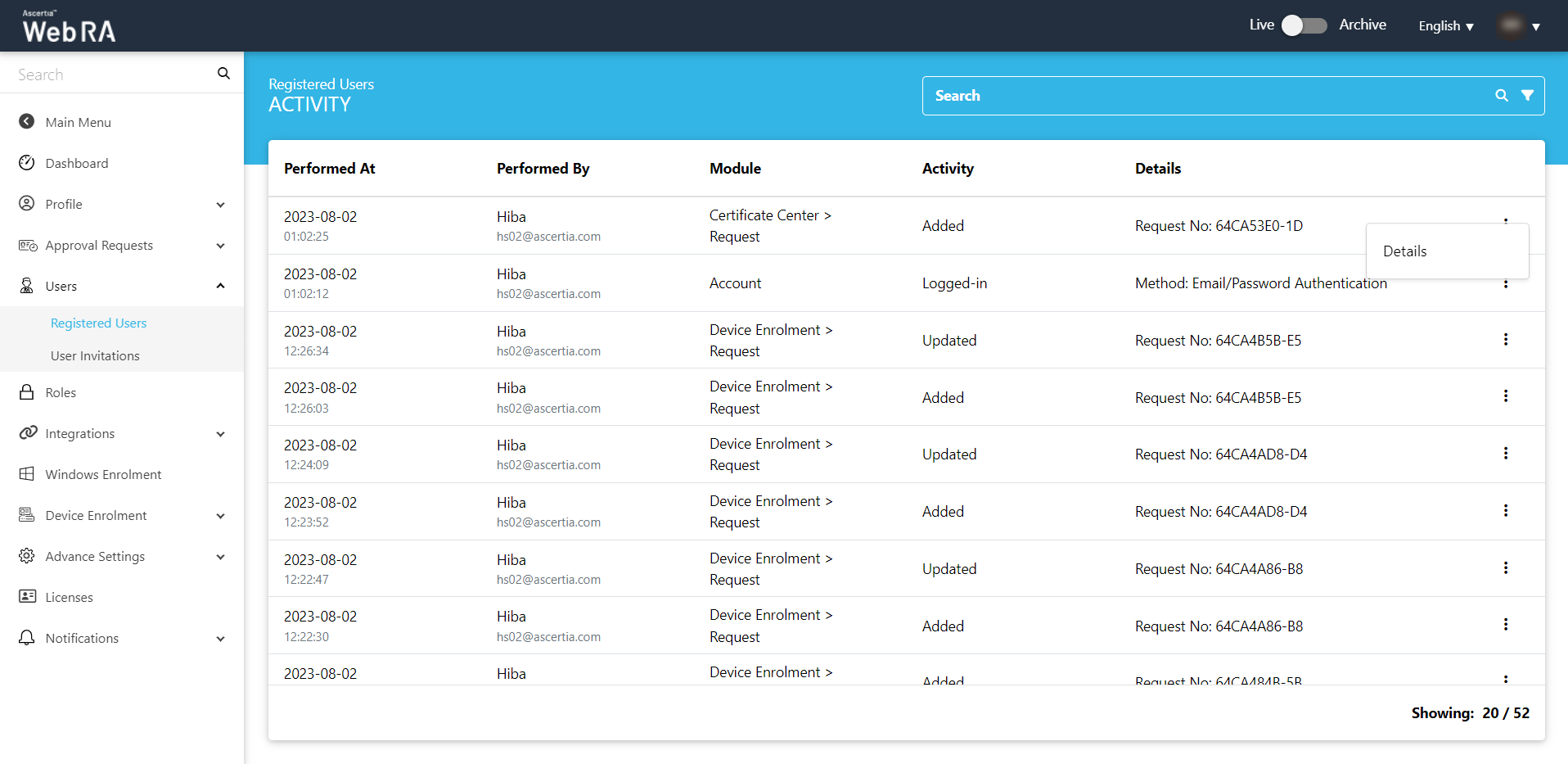
You can view the details of Activity. Click close.
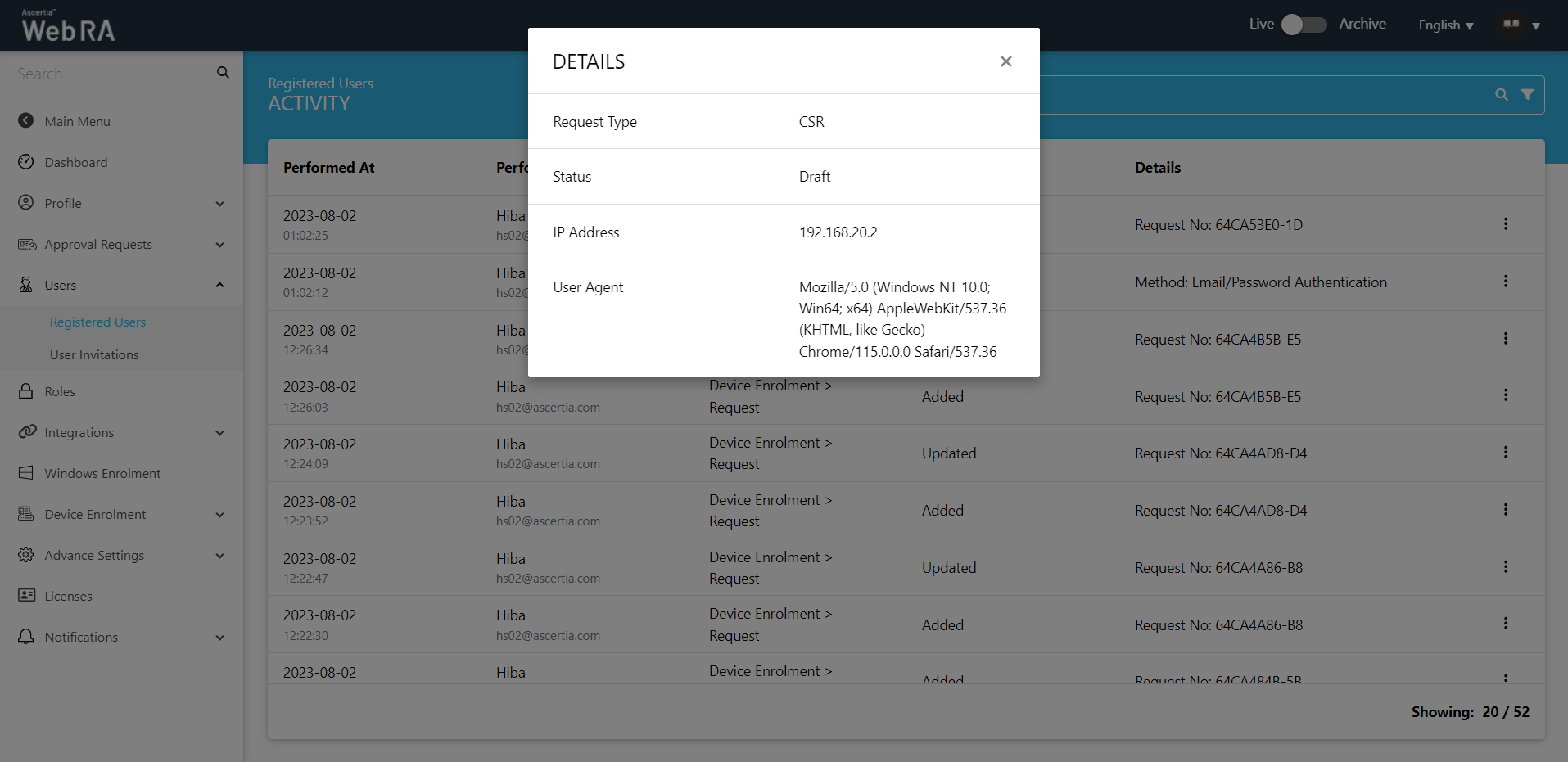
There is an "Advance Search" button in the User's section. You can select a specific module to view a user's activity against that module.
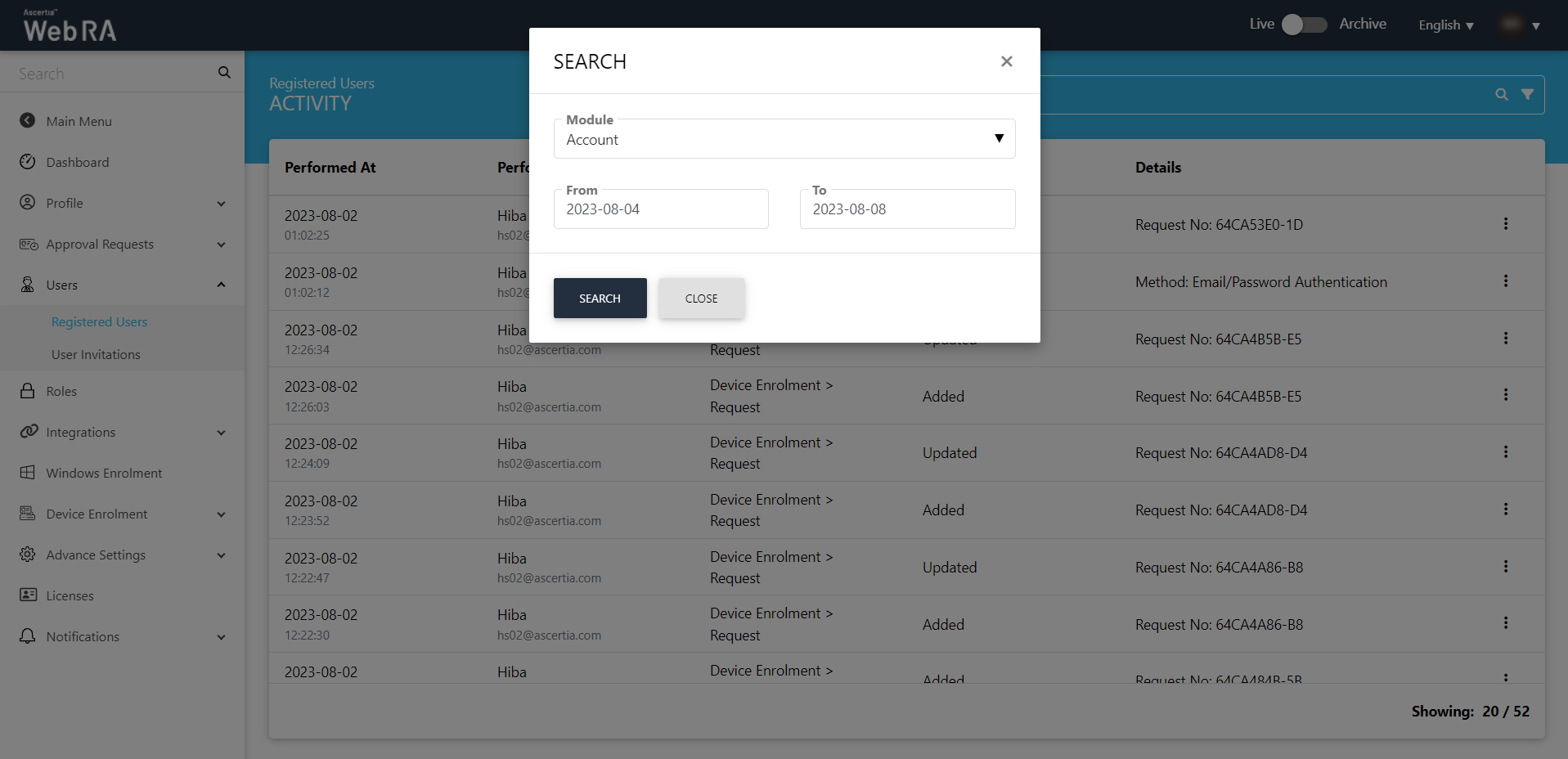
Registration Activity
An operator can also view how a user is registered to ADSS Web RA Server. It displays which administrator has invited a user or approved his registration request. This section displays module and each activity that is performed against it.
Click ![]() against the respective user and then click Registration Activity.
against the respective user and then click Registration Activity.
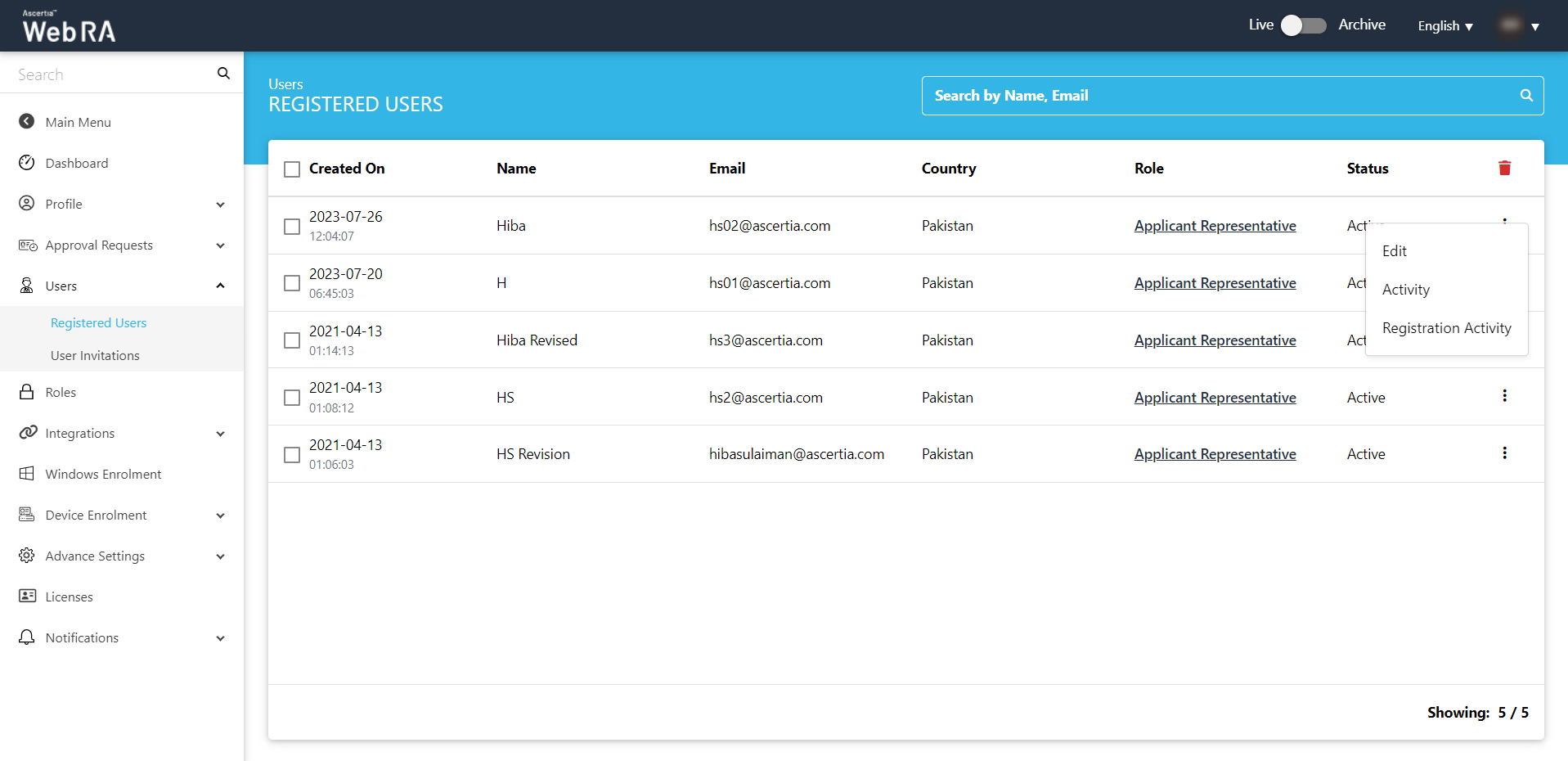
The Registration Activity screen will be displayed.
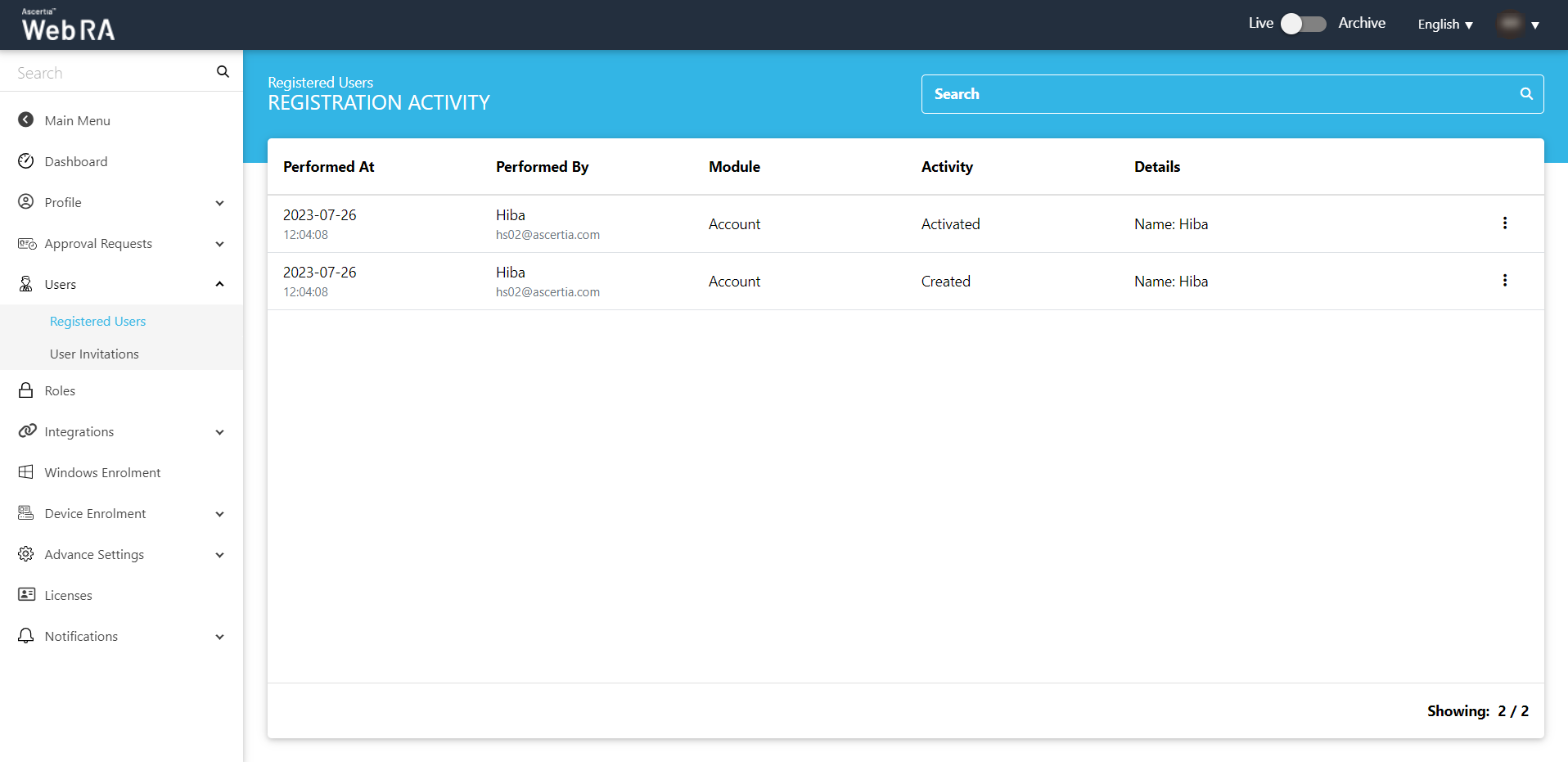
Multiple Enterprises
In case of multiple enterprises, if a user is invited by another enterprise and the user declines the invitation request. Operator will use the RDN values similar to the first invite, to resend the invitation.
